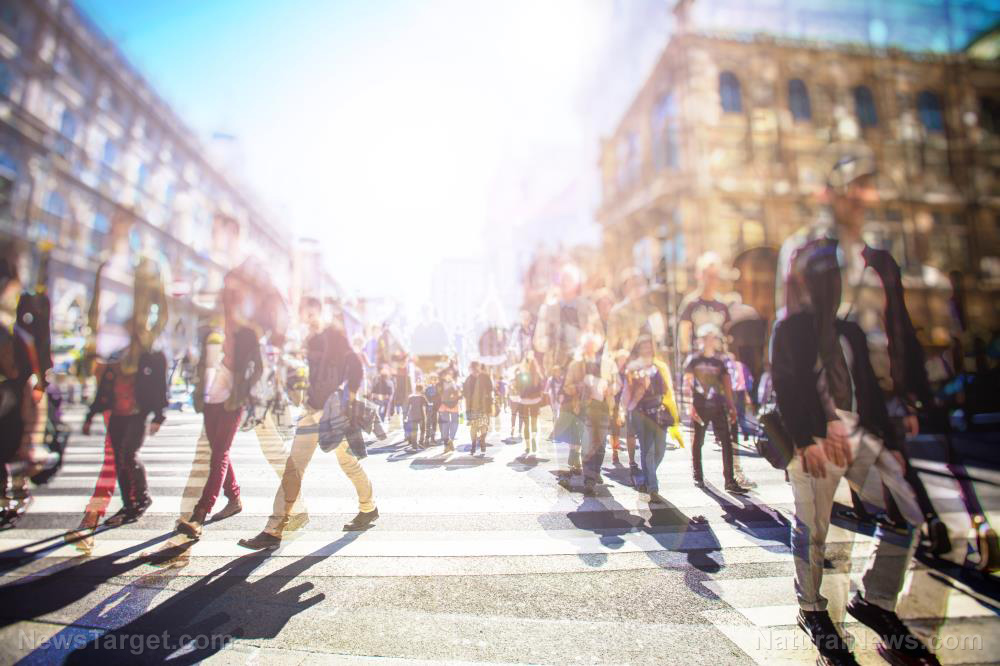
Anyone can seem normal in a crowded place, but when you notice someone trying his best to act inconspicuous, that might be a red flag. No matter where you are, "pre-assault indicators" are universal. It pays to be alert so you can spot any predatory movement patterns or deliberate approaches in a crowd. (h/t to ActiveResponseTraining.net)
Body language and other signals
Human beings are creatures of habit and are quick to recognize certain patterns. If your gut instinct is telling you that a person's movements seem out of the ordinary or that he is trying too hard to look normal in the middle of a crowd, it may be that something in his body language tipped you off. Pay attention to the following physical indicators that someone may be up to no good:
- Hands – Hands above the waistline or clenched fists indicate hostile intention. In a normal scenario, a person is relaxed and has his hands below waist level. Once you see someone with their hands coming up, you should probably get ready to defend yourself. If the potential attacker is hiding his hands, he may be in possession of a weapon.
- Arm movements – A person flailing his arms outside the framework of his body is either trying to blow off some steam or trying to distract you so you won't see the actual attacker coming for you. Smaller gestures within the body frame and finger-pointing are closely associated with violent intention or action.
- Lower body – A person standing on the balls of his feet is getting ready to move rapidly from his position. Standing in a bladed stance with one leg and arm (on the same side of the body) back and out of view is a sign of hostile intention or action. The person may also be concealing a weapon.
- Breathing – A person with criminal intent will have high adrenaline levels, so heavy and rapid breathing are dead giveaways. If you notice someone randomly panting in the middle of a public area, it may be a red flag. Likewise, a person taking a big, deep breath or sighing audibly may be dangerous. The criminal may be taking deliberate breaths to manage his adrenaline and calm down so that he doesn’t prematurely alert you to his hostile intentions.
- "Thousand-yard stare" – Keep your guard up if you see a person staring blankly into space, seemingly unresponsive to his surroundings.
- Face – A person with a clenched jaw or grinding his teeth may have hostile intentions. He may also show contemptuous snarling and have a flushed face.
Recognizing alarming body language may help you prepare for any violent action. There are other indicators that may give you an early warning that you are dealing with a potential criminal. Keep your eyes peeled for these signals:
- Masking behaviors, pacifying actions, "grooming cues"– Criminals evaluate their potential victim as they plan their attack because they want to avoid getting hurt or getting caught at all costs. This situation is stressful for potential attackers, and as their adrenaline kicks in, they will show signs of trying to "hide" psychological discomfort. These signs include unnecessary or excessive touching of the face, neck, or upper body. In particular, the following gestures may be followed immediately by an attack:
- Touching the face or neck
- Wiping the nose or mouth
- Rubbing the eyes
- Smoothing the hair
- Rubbing the neck
- Scratching the head
- Rubbing the arms or chest as if shivering
- Any gesture that partially conceals the face or neck from view
- "Target glancing" – If a criminal is after your belongings, he will stare or repeatedly glance at what he wants to take. This behavior is called target glancing. If you see someone staring intently at whatever you're holding, assume that he's planning to steal it. Take immediate countermeasures to prevent any assault from happening.
- Looking around – Once a criminal has locked onto a target, he will make a quick sweep of the immediate area to see that no one can stop his assault. He will look around and behind him for cops or security guards or CCTVs and possible escape routes. This indicator almost always occurs.
- Predatory movement patterns – A criminal that's targeting you will try to correlate his movement with yours by following, paralleling, or directly approaching in crowds.
- Focus of attention – Be wary of someone who turns and looks away from you when you notice him. This gesture means he is probably trying to "hide" his attention. Someone with a conspicuous lack of movement, like sitting in a parked car without getting out, may also be doing the same thing. If someone "locks in" on you with his eyes, you should be ready for a potential attack.
Now that you've learned these pre-assault indicators, don't be so quick to brand someone a criminal or attacker if he displays one of these warning signs. "Normal" people sometimes make these gestures as well. The key is to notice a cluster of signs. Seeing two, three, or four different indicators is the signal you're waiting for to prepare for a criminal attack.
Sources include:
Please contact us for more information.














